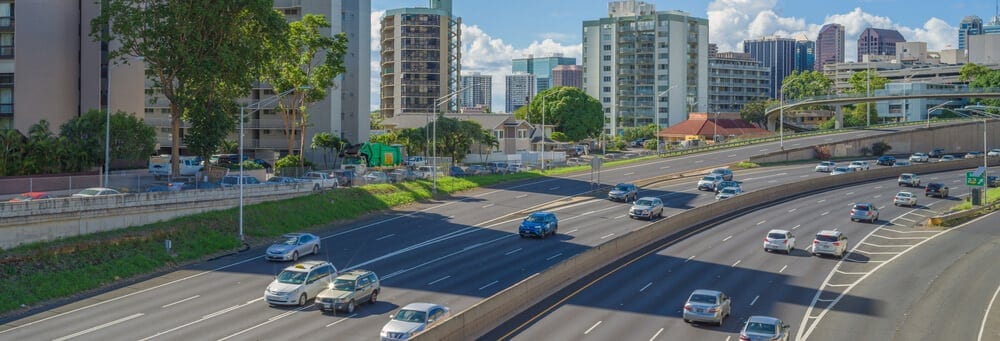
For thousands of years, human beings have relied upon various means of transportation to enable them to move across vast distances of land, sea and air. Nowadays, motorized vehicles in the shape of cars, trains, planes and ships are the mostly widely used forms of transportation, however, with the advent of new, cutting edge technologies, transportation and the systems that enable it, are being transformed in a number of different ways. The Internet of Things (IoT), Big Data, 5G, and advanced automation are but a few of the technologies that are combined together in order to create Intelligent Transportation Systems.
Transportation systems are an everyday part of both our work and personal lives. What many of us take for granted, however, are the systems that underpin our transportation networks and enable us to use them as we do. We’ve moved on significantly since the first days of automobiles and modern-day transportation systems are now saturated with different kinds of technology and produce vast amounts of data each and every day.
The types of technologies used within modern transportation systems are numerous and varied, with newer additions becoming available at a quickening rate thanks in large part to the Internet of Things and the rise of connected devices. These new technologies, coupled with new and improved wireless communications systems and data processing capabilities, have played a significant role in the emergence of intelligent transportation systems as we are seeing them today.
In this article, the first in a three-part series taking a closer look at intelligent transportation systems, we’ll be looking at how advances like the utilization of Big Data have given rise to an entirely new landscape of ITS infrastructure and capabilities such as traffic management systems, environmental objectives, and predicative maintenance.
Data, Data, Data
One of the biggest factors in the emergence of modern-day intelligent transportation systems is the generation, transmission, and utilization of vast amounts of data created by all the different individual connected devices. By using the data, they receive from their integrated components, ITS systems are able to significantly improve aspects of transportation infrastructure such as traffic management and pollution reduction.
The hardware and software that makes up an intelligent transportation system will typically consist of sensors, vehicles, cameras, management systems, and other technologies that will then share the information they generate in order to then optimize the infrastructure and performance of both the transportation system itself and the vehicles that use it.
Providing close to real-time insights into weather and environmental conditions, working to decongest roads and railways and, eventually, helping to bring autonomous vehicles to our transport infrastructure are just some of the ways in which the data produced by connected vehicles and devices is being used by intelligent transportation systems.

Environmentally Friendly Enhancements
The “Intelligence” in “ITS” isn’t just about traffic management or data processing and sharing, either. One of the most innovative and eco-friendly uses for intelligent transportation systems are its environmental and sustainability-orientated applications. With runaway global climate change a looming threat, an increasing number of carbon-reducing ITS applications have begun emerging over the last few years.
One of the most widespread environmentally-focused intelligent transportation initiatives seen around the world is that of reducing the amount of time vehicles spend stationary. These efforts attempt to reduce the amount of air pollutants and particulates being emitted by vehicles who find themselves at a stop while at traffic lights, intersections or other such situations.
As the world moves towards a more sustainable future, intelligent transportation systems will need to look to fresh and innovative new ways in which to provide greener transportation optimization as well as other ways to promote and actively care for the environment.
All Aboard the Automation Express
Arguably, one of the most exciting features of intelligent transportation systems is that they are currently laying down the foundations of what could eventually become a way to feasibly realize the dreams of sci-fi fans and many others around the world and begin to develop and deploy driverless vehicles on roads and highways in our streets and on our highways.
In order to safely deploy autonomous vehicles on our roads, developers and engineers need to find a way in which to share a huge amount of data among a vast number of connected vehicles and devices that will also need to process it in an absolutely miniscule amount of time. Driverless cars are all well and good, but if they can’t receive data in time enough to know when to brake no one will ever feel safe enough inside one to trust them.
There are several ways in which this challenge could be approached, however, the two potential candidates that stir up the most excitement in debates are 5G and edge computing, a subject we’ll be paying more attention to in part two. Once the issue of data transmission and processing time has been resolved, it won’t be too long before we start seeing a significant uptake in the number of autonomous vehicles and driverless cars being deployed across the globe.
In part two of this series, we’ll be taking a look at the role of 5G and edge computing in transforming the intelligent transportation landscape and the potential they both possess to completely revolutionize the way we travel.






